Groundcovers can fill most gaps and narrow spaces, especially when you have a small garden, courtyard, or patio with a designated path filled with hard surfaces. You can think of groundcovers as a natural carpet for your landscape.
But these plants aren’t still objects that don’t react to anything. They aren’t like floor carpets that you can step on however you want, and the carpet will still look much like the same later. If the area you hope ot plant a groundcover in will have high use, you will want to skip all the delicate species and go for hardy varieties that can withstand foot traffic.
That being said, let’s look at some of the best groundcovers that you can grow in high traffic areas.
Table of Contents
1. Thyme-leaf Speedwell (Veronica ortensis)
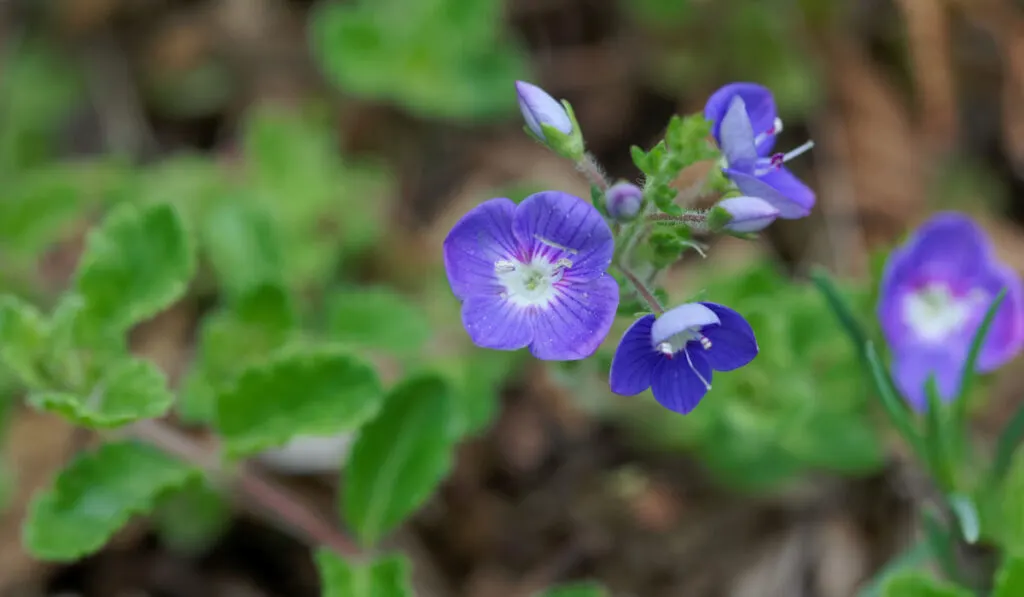
Thyme-leaf speedwells are native to Turkey. These low-growing plants measure just 1 inch tall. However, they can spread as wide as 24 inches to form thick, dark green, carpet-like groundcovers.
These plants also produce small blue flowers that bloom in the summer and spring.
This species is low-maintenance and easy to care for. They can survive with minimal water and love full sun. Thyme-leaf speedwells thrive in hardiness zones 4 to 9. They also repel deer and attract insect pollinators such as bees and butterflies.
Aside from filling gaps on your front lawn or patios, you can also grow these plants in containers.
2. Bird’s-foot Trefoil (Lotus corniculatus)
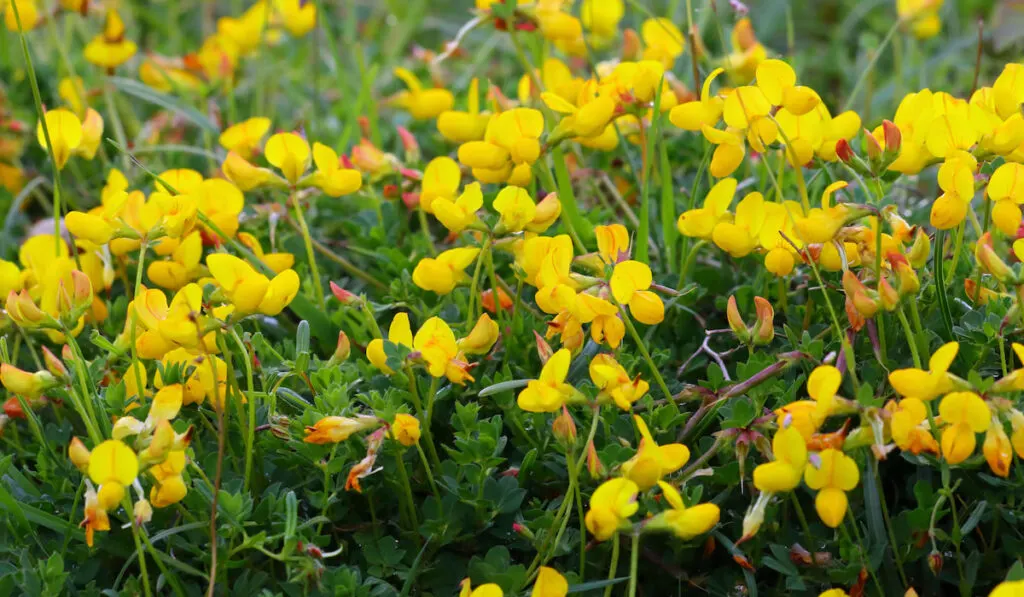
These herbaceous perennials are indigenous to Europe and Asia. They received their name from the shape of their seedpods that resemble bird’s foot.
Bird’s foot trefoils grow 12 to 24 inches tall with the same spread. They grow well in hardiness zones 5 to 8 and prefer full sun.
You can recognize these plants by their bluish-green foliage and clusters of small yellow flowers.
As they mature, the flowers will turn red. Bird’s foot trefoils start blooming in the summer. They are also magnets to insect pollinators such as butterflies and bees.
In the United States, this species is considered invasive in certain habitats such as prairies due to their growing habit which forms a dense mat. As a result, they are a threat to other plants around them. However, with proper care and maintenance, bird’s-foot trefoils can make great groundcovers and container plants.
3. Moss Campion (Silene acaulis)
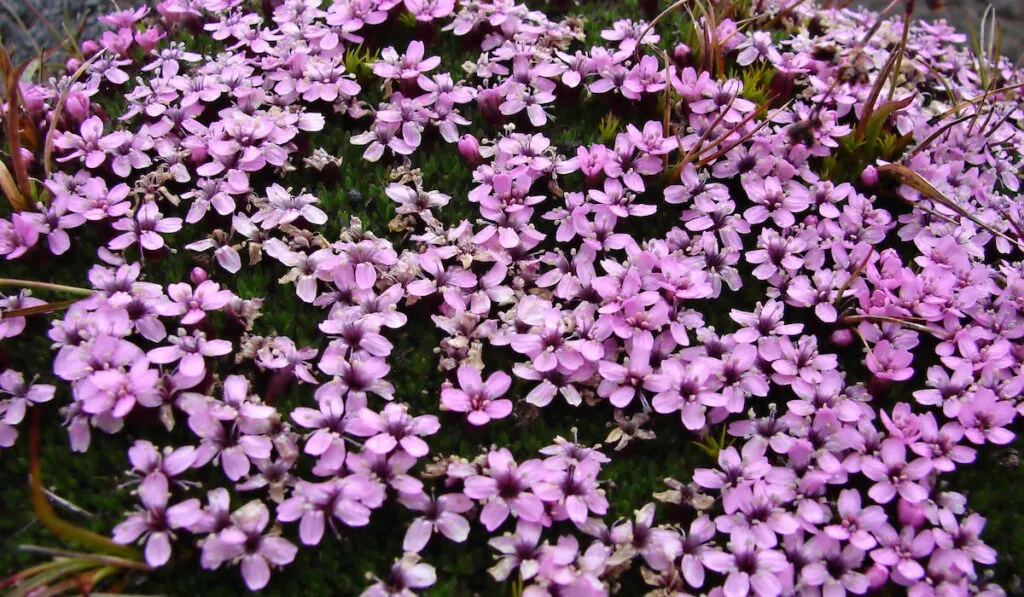
Moss campions, or compass plants, are native to North America and mountainous regions of Eurasia. If you live in cold and windy regions, then moss campions are the best option to have as groundcovers.
They have narrow green leaves and five-petaled pink flowers that bloom in the summer.
On average, moss campions grow 2 to 6 inches tall and spread up to 1 foot. They thrive in hardiness zones 2 to 5 and are capable of tolerating partial or full sun.
These low-growing plants can cover most gaps on the ground with their mat-like structures and small leaves that protect the flowers from damage and overexposure to other elements.
When growing moss campions, you should also be aware of pests and parasite infestation that can destroy these plants. These include aphids, spider mites, slugs, snails, fungi, and whiteflies.
4. Creeping Golden Buttons (Cotula coronopifolia)
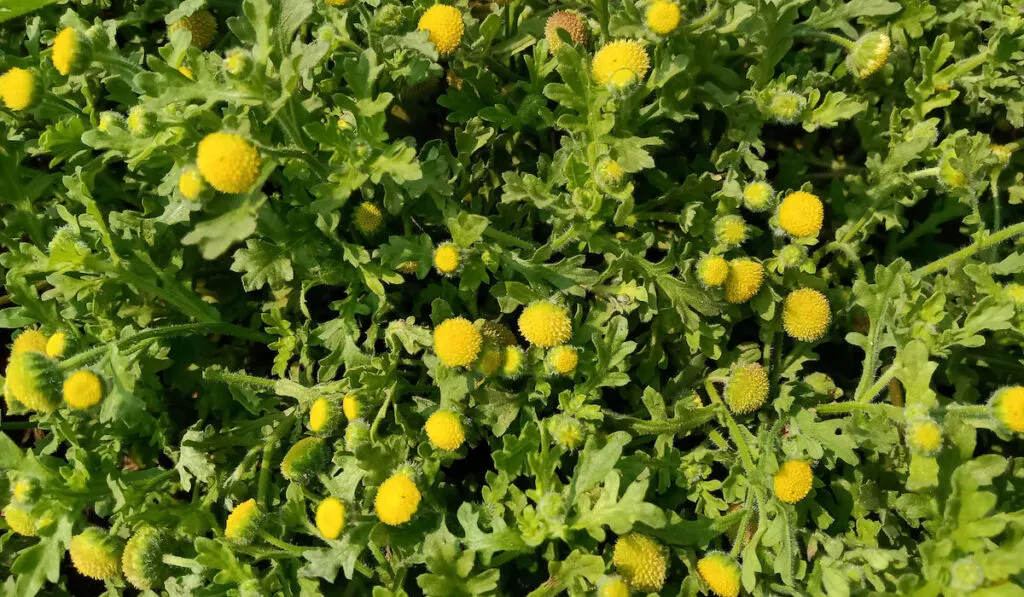
These South African native plants are extremely resistant to drought and arid regions. They are also known as Tinfindell Gold, water buttons, brass buttons, and buttons weeds.
You can spot these herbaceous perennials by their narrow, aromatic green leaves and yellow daisy-like flowers that resemble small buttons.
Creeping golden buttons measure 6 to 10 inches tall and spread 10 inches to 1 foot wide. They grow well in hardiness zones 5 to 10 and bloom from late spring to early summer.
Although this species is easy to grow and rarely suffer from common plant diseases, they aren’t deer resistant. So, you might have to build fences or grow them in protected areas.
5. Spotted Dead-Nettles (Lamium maculatum)
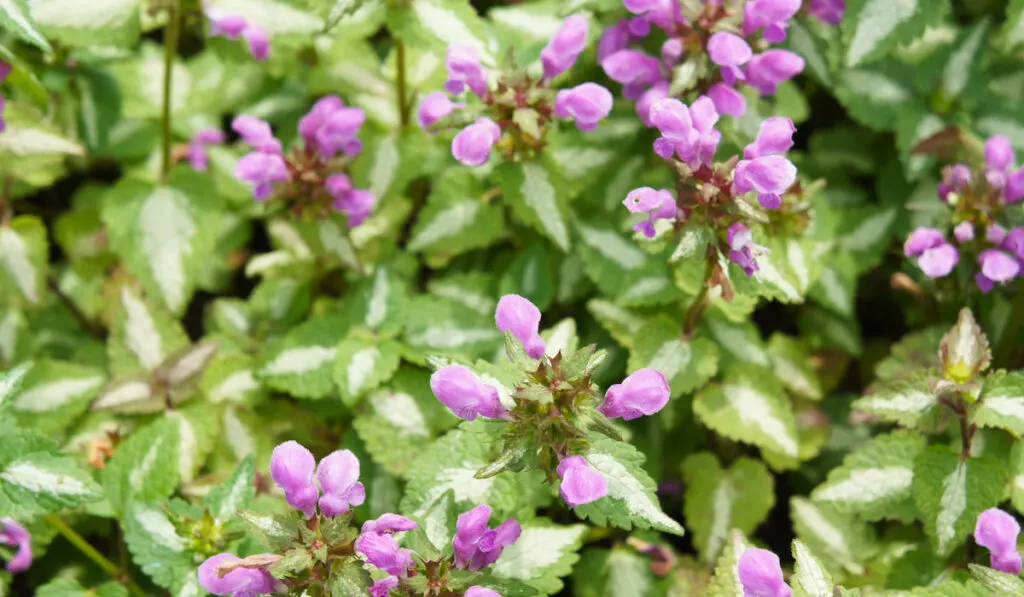
Spotted dead nettles, or White Nancy, are native to Europe, North Africa, and Asia. They are also known as Devil’s Nettle and Devil’s Clover.
These herbaceous perennials can grow up to 1 foot tall and spread 2 to 3 feet wide. Hence, they can cover a lot of spaces if you plant them as groundcovers.
Spotted dead nettles have whitish or silvery-green foliage and clusters of small white or pink flowers that bloom in the spring.
These plants thrive in hardiness zones 3 to 8. Although they can tolerate full sun, spotted dead nettles perform well under shade. They also prefer slightly acidic and moist, well-drained soil.
Most importantly, this species is resistant to drought, pests, and animal attacks such as deer and rabbits.
6. Silver Carpet (Dymondia margaretae)

Like their name, silver carpets can form thick and luscious groundcovers that spread up to 2 feet wide. These low-growing perennials are native to South Africa and measure 1 to 3 inches tall. With their small and narrow silvery-green leaves, these plants can easily endure foot traffic.
Aside from their thick foliage, silver carpets also produce small, daisy-like yellow flowers that bloom in the summer and spring.
They grow best in hardiness zones 9 to 11 and attract insect pollinators such as butterflies.
To grow this species, you need moist, well-drained soils and areas with enough exposure to full sun. Rest assured; silver carpets are easy to maintain. They are capable of tolerating drought and extreme heat.
7. Corsican Sandwort (Arenaria balearica)
Corsican sandworts are indigenous to the Mediterranean. They are also called Balearic sandworts. These erect perennials can form thick mat-like structures to cover the ground with their small glossy green leaves.
Corsican sandworts also have tiny star-shaped white flowers that bloom in the summer and spring.
On average, Corsican sandworts measure 2 inches tall and spread 18 inches wide. They can tolerate partial or full sun. However, the best spot to grow these plants would be in shaded areas. They also thrive in hardiness zones 4 to 8.
With proper care and frequent maintenance, these lovely ground covering plants can live up to five years. What’s more interesting is that these plants attract butterflies and are resistant to deer attacks.
8. Woolly Yarrow (Achillea tomentosa)

Woolly yarrows are one of sun-loving groundcovers that you can grow in hot regions. They measure 6 to 8 inches tall and spread 12 to 18 inches.
These plants possess silvery-green fern-shaped leaves and clusters of small yellow flowers that bloom in the summer and spring.
Woolly yarrows are easy to maintain. They grow well in hardiness zones 3 to 8 with the flexibility to adapt to different levels of soil pH.
Aside from groundcovers, you can also grow these plants in containers and garden beds.
Having woolly yarrow in your lawn can brighten the whole landscape. They attract butterflies and repel common plant-destroying animals such as rabbits and deer.
9. Snow-in-Summer (Cerastium tomentosum)
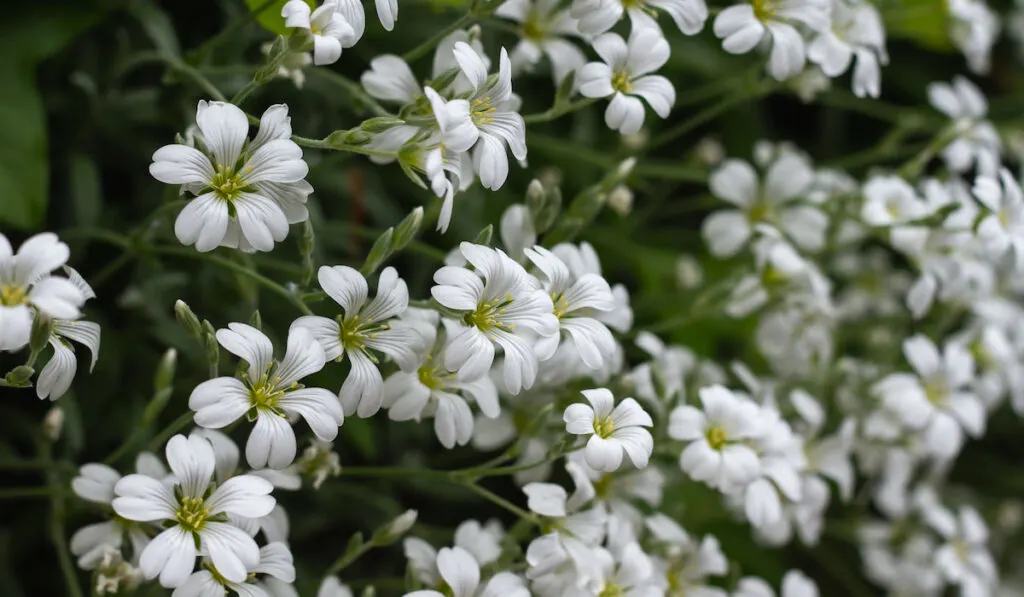
These herbaceous perennials are native to Europe. They are one of the groundcovers with evergreen foliage, even though the leaves have a slightly fuzzy, silvery sheen to them.
You can recognize Snow-in-Summers because of these silver leaves and the star-shaped white flowers with yellow centers.
On average, these groundcovers grow 6 inches to 1 foot tall and spread up to 2 feet wide. Since they hail from dry and arid regions, Snow-in-Summers are drought tolerant and capable of tolerating full sun. Although these plants can thrive in medium dry soil, they still prefer moist and well-drained soil.
Snow-in-Summers grow well in hardiness zones 3 to 7. These deer-resistant plants also bloom prolifically in the summer and spring.
10. Blue Star Creeper (Isotoma fluviatilis)
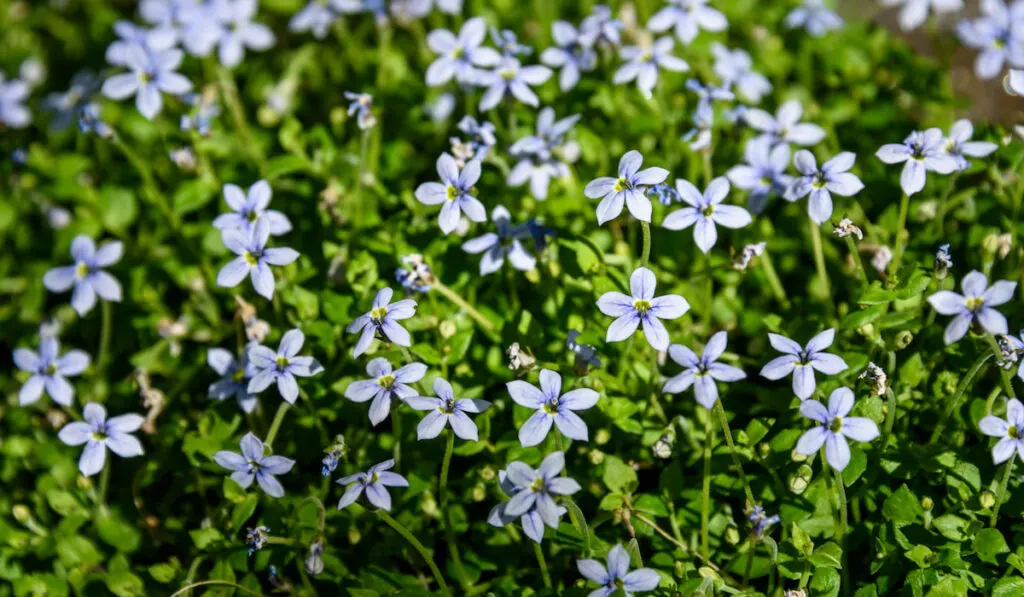
Blue Star Creepers are native to Asia, Australia, and New Zealand. These plants are also known as swamp isotomes.
These low-growing perennials produce beautiful five-petaled blue flowers that can add color to your garden collections.
Blue star creepers are a fast-growing variety that can tolerate partial and full sun. They measure 2 to 15 inches and bloom throughout the spring until fall. Aside from foot traffic, it is also a drought tolerant species that requires minimal supervision.
In some cases, they can be pretty invasive, especially if their environment is highly nutritious and optimal for them to spread.
There are three major Isotoma species that you can find such as Isotoma fluvialitis, Isotoma aurealis, and Isotoma borealis. Each variety varies in size with different flower colors.
11. Scotch Moss (Sagina subulata)
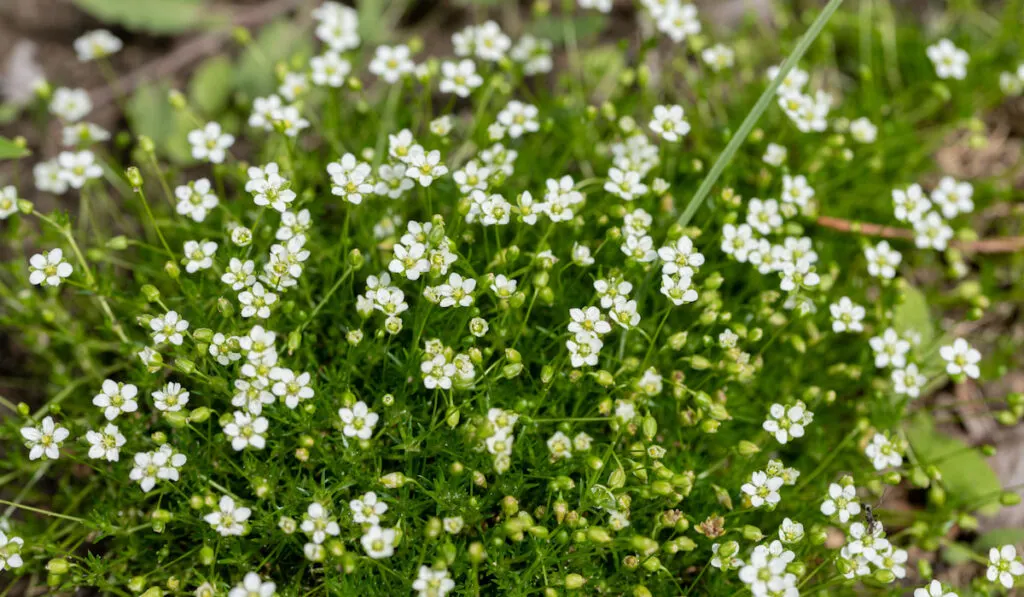
These moss-like herbaceous perennials are indigenous to Europe. They are also called Irish moss, Lawn Spurrey, Lawn Pearlwort, and Heath Pearlwort.
Although Scotch moss measures 1 to 2 inches tall, there is no limit on how wide it can spread. Under the right conditions with enough available space, these plants can grow and cover your ground like a thick, natural carpet.
Scotch moss has small, narrow, bright green leaves with star-shaped white flowers that bloom in late spring.
They thrive in hardiness zones 4 to 8 with the flexibility to tolerate partial or full sun. The best medium to grow these plants would be in neutral or slightly acidic well-drained soil.
This species is suitable for anyone with a large garden or lawn. Although they grow slowly, the wait is worth it, especially after they completely blanket the whole landscape.
12. Baby’s Tears (Soleirolia soleirolii)
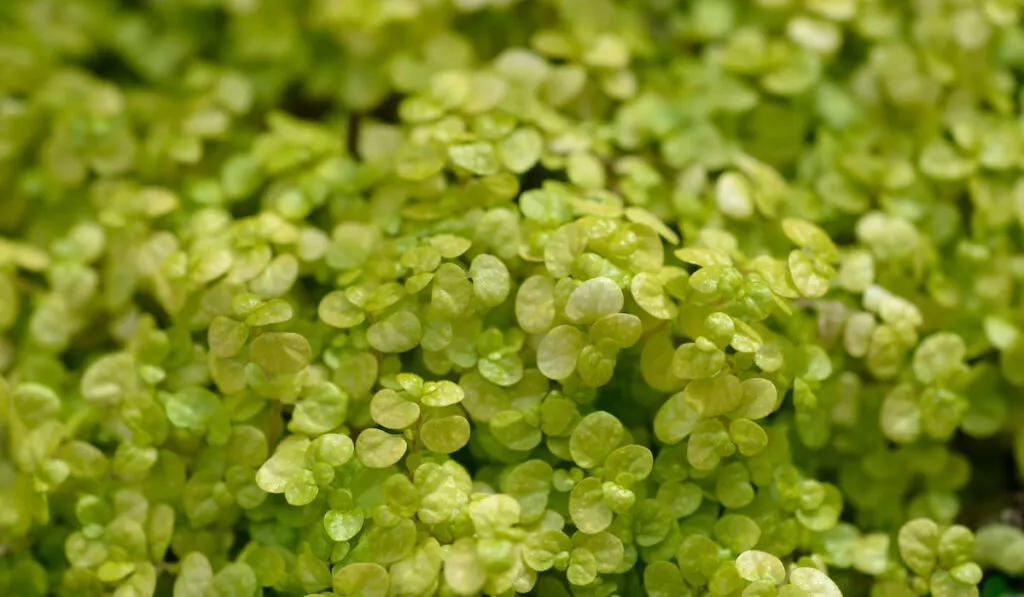
These Mediterranean-native perennials are well-suited for people that live in warm regions. They are also called angel’s tears and helxine.
These groundcover plants are easy to recognize due to their small bright green, kidney or bean-shaped leaves and tiny whitish-cream flowers that usually go unnoticed without a closer look.
On average, Baby’s Tears measure 1 to 4 inches tall and spread up to 4 inches. They grow well in hardiness zones 9 to 11 and start blooming in the spring and continue until summer.
Although these moss-like plants can tolerate partial sun, the best spot to grow them is under shade. Baby’s Tears also prefer slightly acidic and moist well-drained soil.
There are four common Baby’s Tears varieties that you can grow as groundcovers. These include ‘Golden Queen’, ‘Silver Queen’, ‘Aurea’, and ‘Variegata’. Each variety produces flowers with various colors such as yellow, silver, and grayish silver.
13. Corsican Mint (Mentha requeinii)
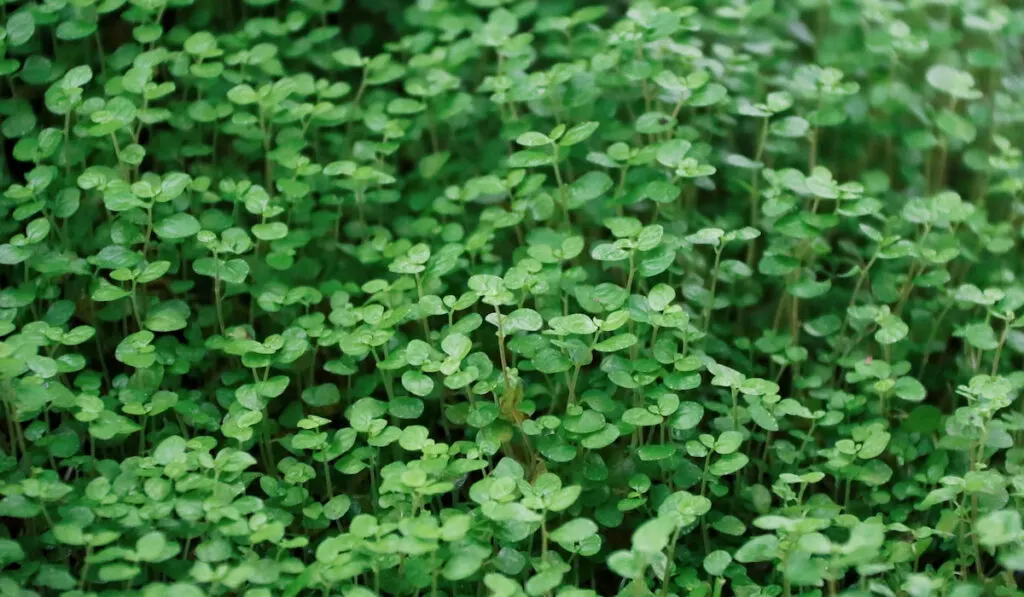
If you’re looking for a groundcover species that doesn’t just tolerate foot traffic but also produces a refreshing scent, then Corsican mint is the best candidate for the job. These low-growing plants are native to Europe, particularly in France, Italy, Corsica, and Sardinia.
Corsican mints have oval-shaped, scented green leaves with small five-petaled purple flowers that bloom in early summer.
They grow between 1 to 4 inches tall and spread between 6 to 12 inches wide. These plants thrive in hardiness zones 7 to 11 and grow well in slightly acidic and moist well-drained soil. They also can tolerate partial or full sun.
Although Corsican mints are low-maintenance plants, they can become quite invasive, especially if you live in southeastern United States.
But the best part of having these plants is that their scent can repel rodents and other pests.
14. Rupturewort (Herniaria glabra)

Also known as green carpets, these low-growing creepers are native to Europe, Asia, and North Africa. They grow 4 to 20 inches tall and spread up to 2 feet wide.
Rupturewort possesses tiny green leaves and turns to red or bronze when autumn comes. They also produce yellowish-green micro-flowers that appear in the summer.
These hardy plants grow best in hardiness zones 6 to 10. They are resistant to drought and can tolerate partial or full sun. If you live in hot and warm region, this species won’t have a hard time adapting to their environment.
Rupturewort produces massive amounts of seeds each year and can be invasive in situations where it isn’t planted purposely.
Aside from covering your lawn, you can also grow Rupturewort for the medicinal benefits. They can help in alleviating kidney stones, bladder stones, cystitis, and other illnesses.
15. Dwarf Mondo Grass (Ophiopogon japonicus ‘nanus’)

Dwarf mondo grass are indigenous to Asia, specifically in China, Japan, and Korea. They are also known as monkey grass. There are two varieties of mondo grass, which are normal and dwarf. For the sake of covering your landscape, the dwarf cultivar is the best.
These low-growing perennials measure 4 to 6 inches tall and spread the same.
They have long, narrow dark green with purple, white, or lavender flowers that bloom in the summer. After the flowers wilt, they turn dark purple and resemble small berries.
Dwarf mondo grass thrive in hardiness zones 6 to 11. They grow best in moist, well-drained soil and under partial or full sun.
Final Thoughts
Most varieties listed above are highly resilient and possess the ability to recover quickly when they repeatedly encounter heavy foot traffic. But you should also remember to pick varieties that love full sun if the area is hot and dry.
This is because most groundcovers that you choose to have near pathways, steppingstones, and open spaces with high traffic will be exposed to direct sunlight with minimal shade. Hence, you should avoid sensitive groundcovers that can’t tolerate full sun at all costs.
But of course, you can still opt for shade-loving plants, provided that they grow next to tall companion plants, or you live in cooler regions with minimal sun.
Resources
- https://www.gardeningknowhow.com/ornamental/groundcover/gcgen/groundcover-for-foot-traffic.htm
- https://www.highcountrygardens.com/gardening/groundcovers-you-can-step-on
- https://www.gardenguides.com/info_8253106_ground-cover-plants-hightraffic-areas.html
- https://www.bhg.com/gardening/flowers/perennials/walkable-groundcovers/
- https://www.highcountrygardens.com/perennial-plants/veronica/veronica-oltensis
- https://hort.extension.wisc.edu/articles/ground-cover-veronicas/
- https://www.mygardenlife.com/plant-library/1948/lotus/corniculatus
- https://www.dnr.state.mn.us/invasives/terrestrialplants/herbaceous/birdsfoottrefoil.html
- https://www.backyardgardener.com/plantname/silene-acaulis-moss-campion/
- https://www.fs.usda.gov/wildflowers/plant-of-the-week/silene_acaulis.shtml
- https://www.inaturalist.org/taxa/68886-Silene-acaulis
- https://www.gardenia.net/plant/cotula-coronopifolia
- https://www.highcountrygardens.com/perennial-plants/unique-plants/cotula-tiffendell-gold
- https://www.missouribotanicalgarden.org/PlantFinder/PlantFinderDetails.aspx?kempercode=d720
- https://www.gardenia.net/plant/lamium-maculatum-white-nancy
- https://waterwisegardenplanner.org/plants/dymondia-margaretae/
- https://www.gardenia.net/plant/dymondia-margaretae-silver-carpet
- http://plants.squakmtnursery.com/12230001/Plant/11400/Corsican_Sandwort/
- https://candide.com/ZA/plants/fc9589d3ef15d6a222fea3958b0caa0f
- http://www.perennials.com/plants/achillea-tomentosa.html
- https://www.mygardenlife.com/plant-library/5422/achillea/tomentosa/goldie
- https://www.gardenia.net/plant/cerastium-tomentosum-snow-in-summer
- https://www.thespruce.com/how-to-grow-snow-in-summer-plants-2132613
- https://www.epicgardening.com/blue-star-creeper/
- https://www.gardeningknowhow.com/lawn-care/lawn-substitutes/blue-star-creeper-lawn/blue-star-creeper-plant.htm
- https://www.thespruce.com/scotch-moss-plant-profile-5070467
- https://www.gardenia.net/plant/sagina-subulata
- https://www.thespruce.com/baby-tears-plant-4582879
- https://www.burkesbackyard.com.au/fact-sheets/in-the-garden/grasses-ground-covers-lawns/babys-tears/
- https://www.thespruce.com/corsican-mint-profile-5122496
- https://www.epicgardening.com/corsican-mint/
- https://www.gardenershq.com/Herniaria-rupture-wort.php
- https://plantcaretoday.com/herniaria-glabra.html
- https://rethority.com/dwarf-mondo-grass/
- https://plantaddicts.com/dwarf-mondo-grass
